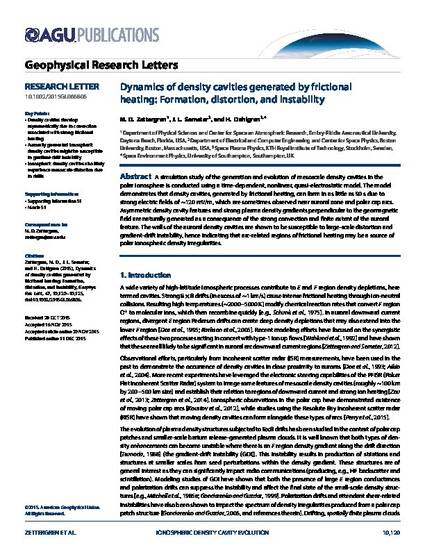
A simulation study of the generation and evolution of mesoscale density cavities in the polar ionosphere is conducted using a time-dependent, nonlinear, quasi-electrostatic model. The model demonstrates that density cavities, generated by frictional heating, can form in as little as 90 s due to strong electric fields of ∼120 mV/m, which are sometimes observed near auroral zone and polar cap arcs. Asymmetric density cavity features and strong plasma density gradients perpendicular to the geomagnetic field are naturally generated as a consequence of the strong convection and finite extent of the auroral feature. The walls of the auroral density cavities are shown to be susceptible to large-scale distortion and gradient-drift instability, hence indicating that arc-related regions of frictional heating may be a source of polar ionospheric density irregularities.
Available at: http://works.bepress.com/matthew_d_zettergren/5/
